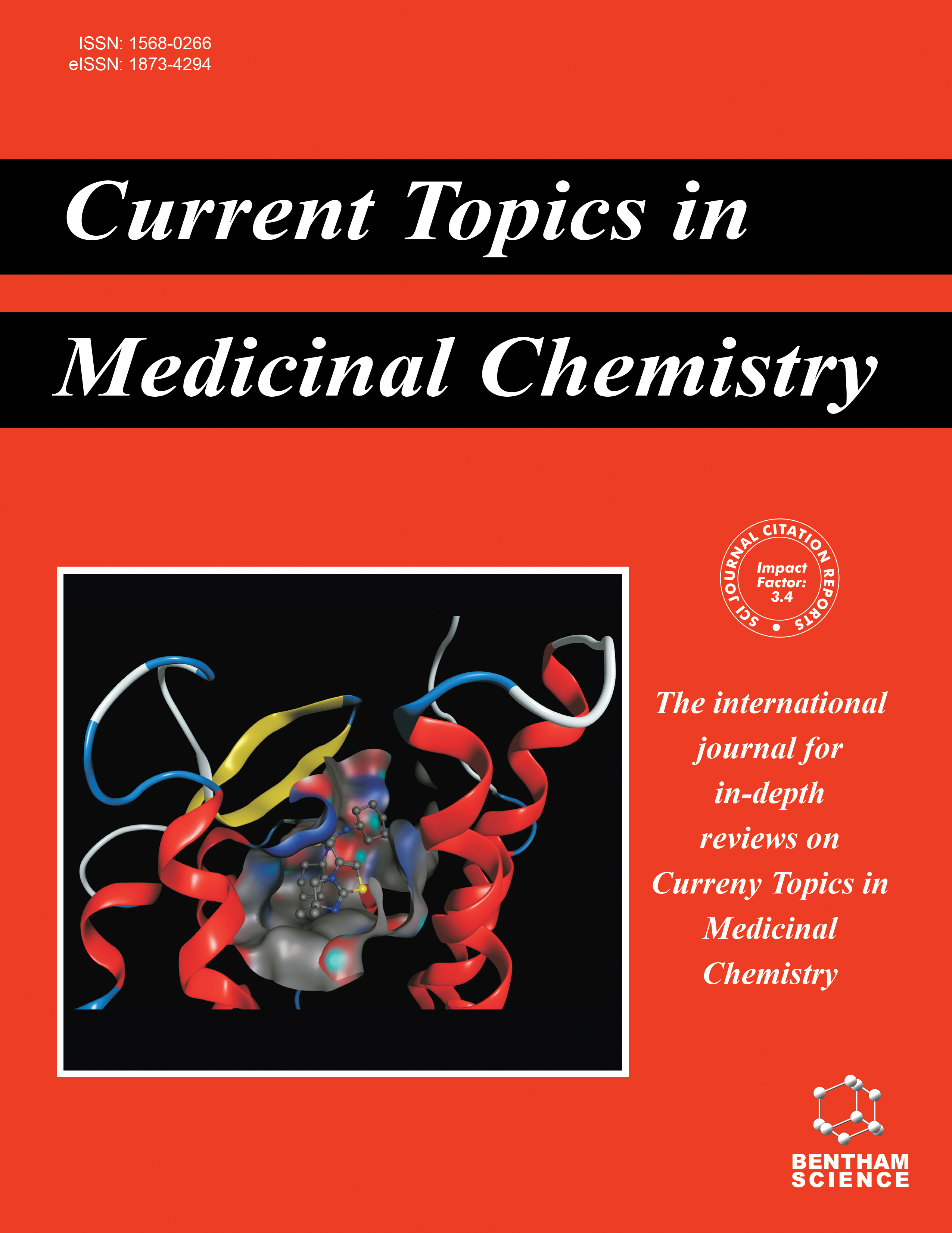- Home
- A-Z Publications
- Current Topics in Medicinal Chemistry
- Previous Issues
- Volume 18, Issue 5, 2018
Current Topics in Medicinal Chemistry - Volume 18, Issue 5, 2018
Volume 18, Issue 5, 2018
-
-
s Ubiquitin Proteasome System as a Potential Drug Target for Malaria
More LessAuthors: Pedro H. Scarpelli Pereira, Chiara Curra and Celia R.S. GarciaParasites of Plasmodium genus are responsible for causing malaria in humans. Resistant strains to all available antimalarials can be found in several locations around the globe, including parasites resistant to the latest generation of combination drugs, such as piperaquine + artemisinin. Plasmodium develops between two completely different hosts such as a vertebrate one and the mosquito vector, thus it has the ability t Read More
-
-
-
Polyamines and Related Nitrogen Compounds in the Chemotherapy of Neglected Diseases Caused by Kinetoplastids
More LessAuthors: Juan A. Bisceglia, Maria C. Mollo, Nadia Gruber and Liliana R. OrelliNeglected diseases due to the parasitic protozoa Leishmania and Trypanosoma (kinetoplastids) affect millions of people worldwide, and the lack of suitable treatments has promoted an ongoing drug discovery effort to identify novel nontoxic and cost-effective chemotherapies. Polyamines are ubiquitous small organic molecules that play key roles in kinetoplastid parasites metabolism, redox homeostasis and in the normal progr Read More
-
-
-
Modern Approaches for the Discovery of Anti-Infectious Drugs for the Treatment of Neglected Diseases
More LessAuthors: Carolina L. Bellera, Maria L. Sbaraglini and Alan TaleviNeglected diseases comprise a number of infectious diseases historically endemic to low- and middle-income countries, though recently they have spread to high-income countries due to human migrations. In the past, pharmaceutical companies have shown hesitant to invest in these health conditions, due to the limited return on investment. As a result, the role of the academic sector and not-for-profit organizations in the di Read More
-
-
-
Insights into Anti-Trypanosomal Agents Based on Synthetic Glycoconjugates
More LessAuthors: Vanessa L. Campo, Marcelo Fiori Marchiori and Ivone CarvalhoChagas disease is still a worldwide threat, with estimated 6 to 7 million infected people, mainly in Latin America. Current treatments still rely only on benznidazol and nifurtimox, drugs with poor efficacy in chronic infection phase and recognized toxicity. Thus, there is an urgent need for new therapeutic agents against this disease. In this review we present an updated selection over the last decade of synthetic glycoconjugate Read More
-
-
-
Structure-Based Virtual Screening and Biochemical Evaluation for the Identification of Novel Trypanosoma brucei Aldolase Inhibitors
More LessIntroduction: The glycolytic enzyme fructose-1,6-bisphosphate aldolase is a validated molecular target in human African trypanosomiasis (HAT) drug discovery, a neglected tropical disease (NTD) caused by the protozoan Trypanosoma brucei. Herein, a structure-based virtual screening (SBVS) approach to the identification of novel T. brucei aldolase inhibitors is described. Distinct molecular docking algorithms were used Read More
-
-
-
Identification, Characterization and Molecular Modelling Studies of Schistosoma mansoni Dihydrofolate Reductase Inhibitors: From Assay Development to Hit Identification
More LessIntroduction: Schistosoma mansoni is responsible for virtually all reported cases of schistosomiasis in Latin America and the emergence of praziquantel- and oxaminiquine-resistant strains makes it urgent to develop new schistosomicide agents. Dihydrofolate reductases (DHFR) from bacteria and protozoan parasites are considered validated macromolecular targets for this goal, but S. mansoni DHFR (SmDHFR) has be Read More
-
-
-
First Total Synthesis of ω-Phenyl Δ6 Fatty Acids and their Leishmanicidal and Anticancer Properties
More LessIntroduction: The first total synthesis of ω-phenyl Δ6 fatty acids (FA) and their cytotoxicity (A549) and leishmanicidal (L. infantum) activities are described. The novel 16-phenyl-6-hexadecynoic acid (1) and the known 16-phenylhexadecanoic acid (2) were synthesized in 7-8 steps with overall yields of 46 % and 41 %, respectively. The syntheses of the unprecedented 10-phenyl-6-decynoic acid (3), 10-cyclohexyl-6-decynoic acid Read More
-
Volumes & issues
-
Volume 25 (2025)
-
Volume 24 (2024)
-
Volume 23 (2023)
-
Volume 22 (2022)
-
Volume 21 (2021)
-
Volume 20 (2020)
-
Volume 19 (2019)
-
Volume 18 (2018)
-
Volume 17 (2017)
-
Volume 16 (2016)
-
Volume 15 (2015)
-
Volume 14 (2014)
-
Volume 13 (2013)
-
Volume 12 (2012)
-
Volume 11 (2011)
-
Volume 10 (2010)
-
Volume 9 (2009)
-
Volume 8 (2008)
-
Volume 7 (2007)
-
Volume 6 (2006)
-
Volume 5 (2005)
-
Volume 4 (2004)
-
Volume 3 (2003)
-
Volume 2 (2002)
-
Volume 1 (2001)
Most Read This Month
Article
content/journals/ctmc
Journal
10
5
false
en


